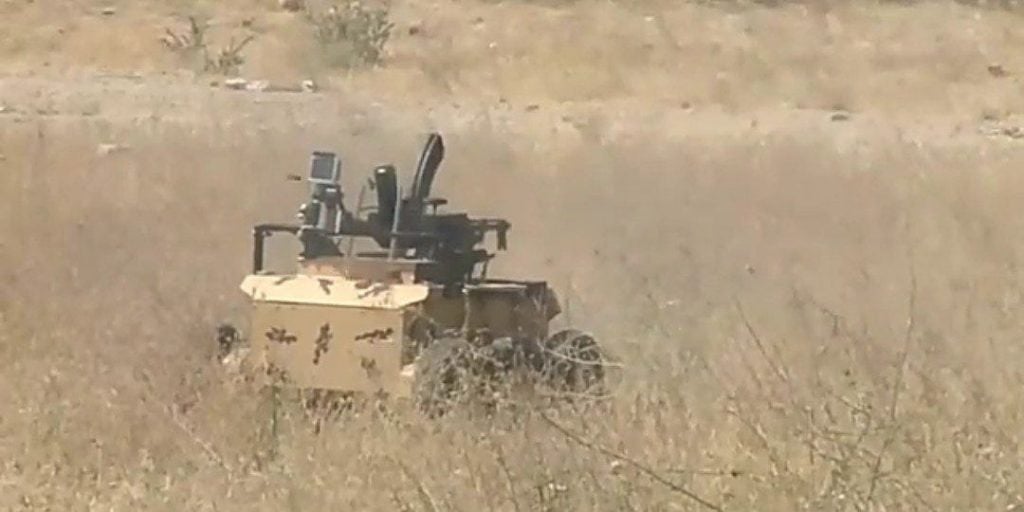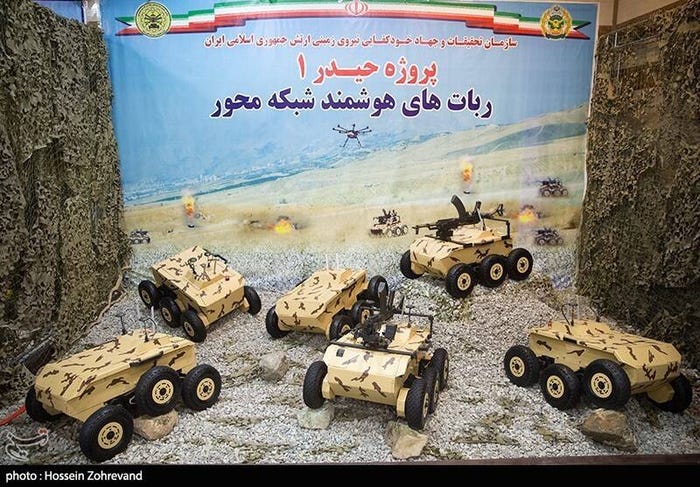Iran Unveils Heidar-1 UGVs
The impressively titled Research and Self-Sufficiency Jihad Organization of the Islamic Republic of Iran Army Ground Forces has unveiled a new family of unmanned ground vehicles (UGVs). In a press statement this week from a domestic arms show in Tehran, the Iranians showed still images and a short video of the six-wheeled UGVs in action.
Designed as “network-connected anti-infantry and armor smart UGVs”, the Heidar-1 family apparently includes at least two and possibly three variants, however, it is difficult to be certain based on the limited imagery.
One appears to follow the wartime Russian idea of mine dogs or the German Goliath as an anti-armour capability with the UGV intended to drive up to or under an armoured fighting vehicle (AFV) before detonating. The other crudely mounts what looks to be the KLT variant of the Iranian 7.62x39mm KL-7.62, with a DDR MPi-KMS-72-style folding stock, upside down with separate optic. It has more in common with similar craft-produced anti-personnel UGVs made by a number of factions in the Syrian Civil War. All variants feature exposed antennae and a miniature camera.

The anti-armour variant could conceivably employ an explosively formed projectile (EFP) charge which the Iranians mastered and exported to various Shia militia groups during the Iraq insurgency. Its successful employment would, however, rely upon the target vehicle not employing any form of electronic counter-IED (improvised explosive device) technology. Active counter-IED systems are commonplace on US and NATO AFVs and work by jamming radio signals meaning that the Heidar-1 would likely be easily immobilised.
The promotional video also showed the UGVs operating in tandem with a number of quadcopter-style unmanned aerial vehicles (UAVs) with the intention clearly being the UAVs spotting targets for the Heidar UGVs to engage. Again with increasing counter-UAV measures being fielded by Western armies, the utility of this approach is also open to question. The system could potentially be employed against lower-technology opponents or in terrorist attacks with deadly effect.

